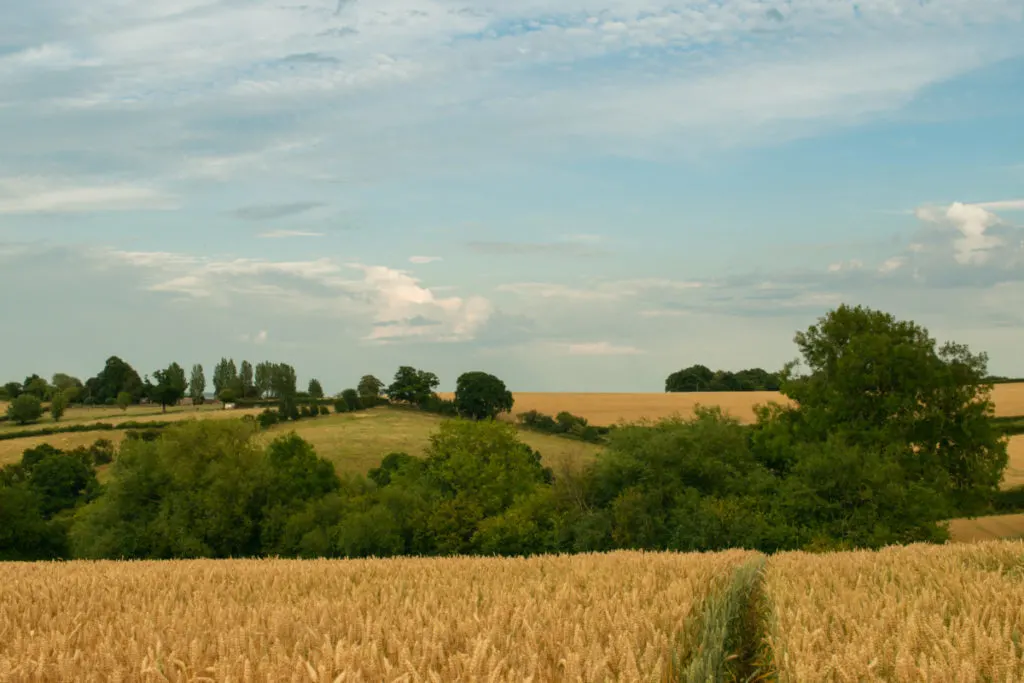
In the far past, hedgerows were often planted to mark property lines and edges of fields where grazing animals fed. It kept the sheep in and the deer out. At the same time other ground dwelling animals, such as hedgehogs, were free to pass back and forth in the quest for food and shelter.
Nowadays, with the use of technology and GPS, those boundary markers have the potential to go out of fashion. But not so fast!
There are so many reasons to maintain the hedgerows that still exist and even more beneficial reasons to keep planting more of them.
Take a closer look at any hedgerow and even inexperienced eyes can take in the biodiversity that they have to offer. All manner of weeds are growing there from nettles to cleavers, violets to yarrow and hundreds more in between. Many of those early spring weeds are edible, not only for the animals but for you too.
You’ll notice birds, lizards, insects and bees buzzing about.
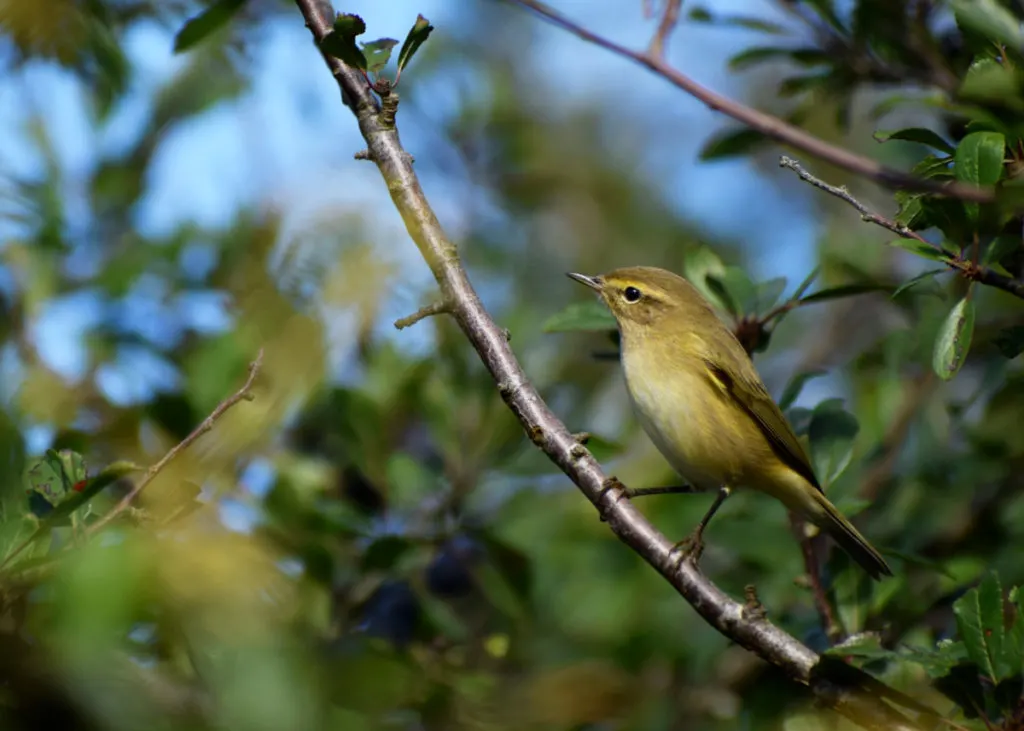
Hedgerows are a beneficial part of our ecosystem that encompasses the edges. And you all know how important edges are, right?
7 main reasons to add a hedgerow to your property
Hedgerows are, in essence, living fences.
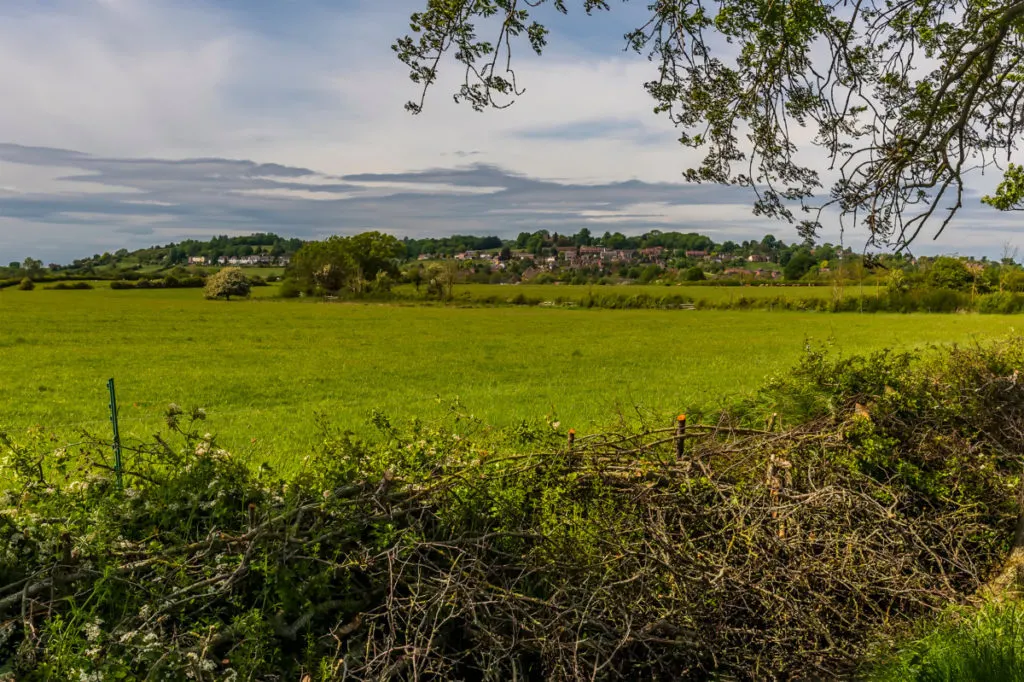
As such, they’re always growing – and evolving.
We’ll get to the aspect of hedgerow maintenance later, but, in the beginning, it is useful to determine your reasons for wanting a hedgerow in the first place.
Keep in mind that hedgerows can be multi-purpose. Opportunities for hedgerow success align when your living fence is located in the right place and planted with the most beneficial species of plants for your area.
From the start, do your own research to determine what plants are native to your region. Native plants are always the best choice.
Exotics, like bamboo is for most of us, may work in the short term as a fencing option. Albeit you may run into some problems down the line.
Take plenty of time to mull your options over before planting a hedgerow. After all, hedgerows can last for decades (even centuries!) to come.
Think long-term and your hedgerow can offer the following benefits for years of enjoyment to come.
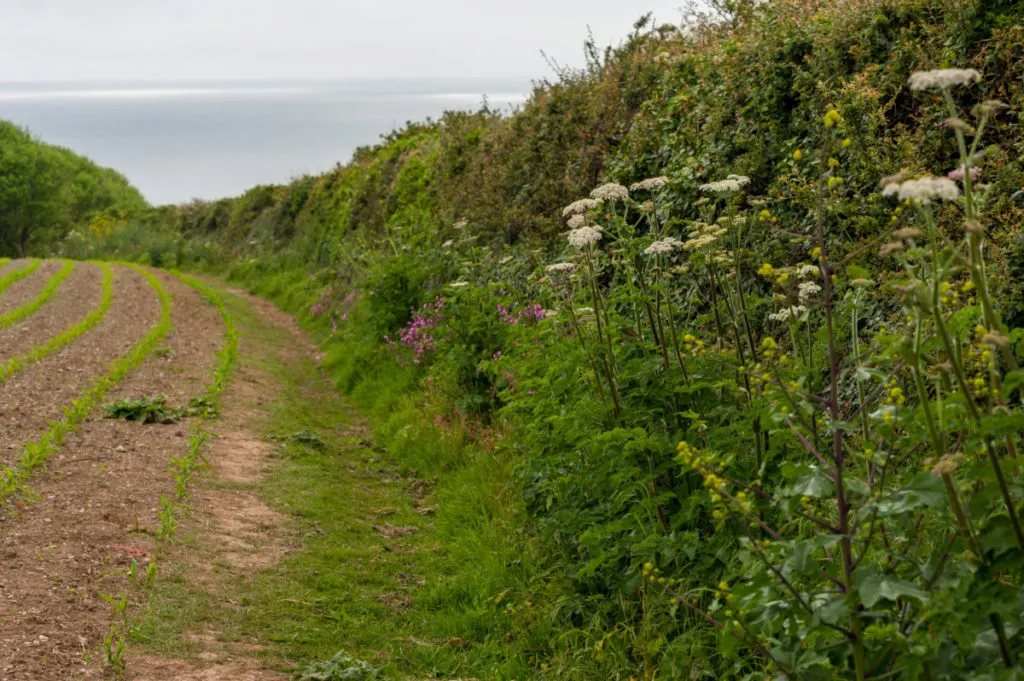
Hedgerows as windbreaks
If you have a backyard orchard to spend plenty of time in, you’ll realize at some point just how windy it is between those spaced-apart trees.
In that case, a windscreen to protect your trees can come in very handy. Not to stop the wind in its entirety, but to lessen the force.
However, using a hedgerow as a windbreak may come with one disadvantage.
Many owners imagine planting a windbreak hedgerow along the property line. That is all good and fine, but for a windbreak to truly be effective, it must be placed at a right angle to the prevailing wind direction.
A traditional windbreak is about 20 feet wide. If you can’t afford to lose that much space from your yard, opt for a 10-12 foot hedgerow instead. Who knows? You might not even miss mowing all that extra grass.
Naturally, there is much more to it, here’s more advice on how to create an effective windbreak hedge.
Privacy issues
Hedgerows can be shorter or taller, depending on what trees and shrubs are growing in them. They can become very dense with branches over time, which not only provide you with a privacy screen, but provides birds and animals with a sense of intimacy too.
A sometimes unintended benefit of putting in a privacy hedgerow, is that it reduces the outside noise as well.
In terms of using a hedgerow as a privacy fence, you’ll have to think outside the arborvitae-evergreen-privet box. Those will all block out your neighbors to some extent. Yet they don’t cater to birds and pollinators as a hedgerow built of native plants, perennials and trees can do.
Whatever plants you choose, start with planting them closer together to fill that hedge in faster.
Hedgerows keep both people and animals in or out
Trust me, no one will be wanting to pass through your hawthorn and blackberry hedge. Not without a little bit of consideration and notice of spiky thorns first. Very few animals will waste their energy to go through anything so difficult either, unless there is a pre-made route that they can crawl under.
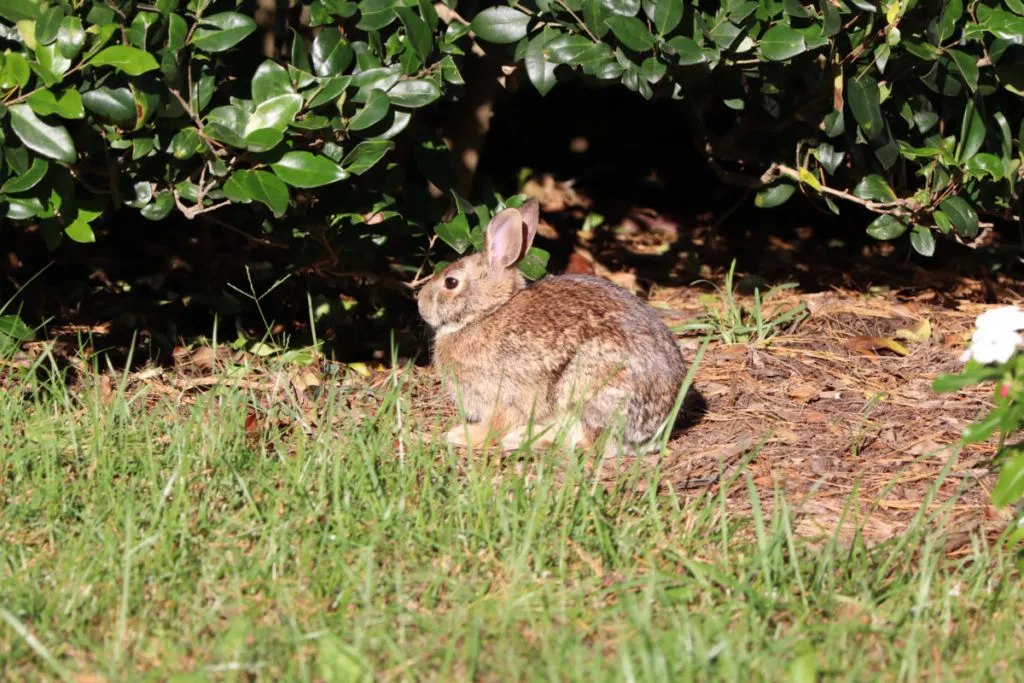
That’s the very thing about hedgerows. They keep people and animals in or out. At least to some extent.
Smaller animals always have the run of the forest. Rabbits hop and snakes slither to and fro as they find the trails that are suitable to their size. Us larger animals have to use gates and walk around fences till we find a thoroughfare suitable to our body frame.
Of course, a hedgerow will never be as secure as a chain link fence, but it can complement one when they are placed side-by-side.
Hedgerows help you rewild the landscape
Supporting wildlife is one of the key factors in planting a hedgerow.
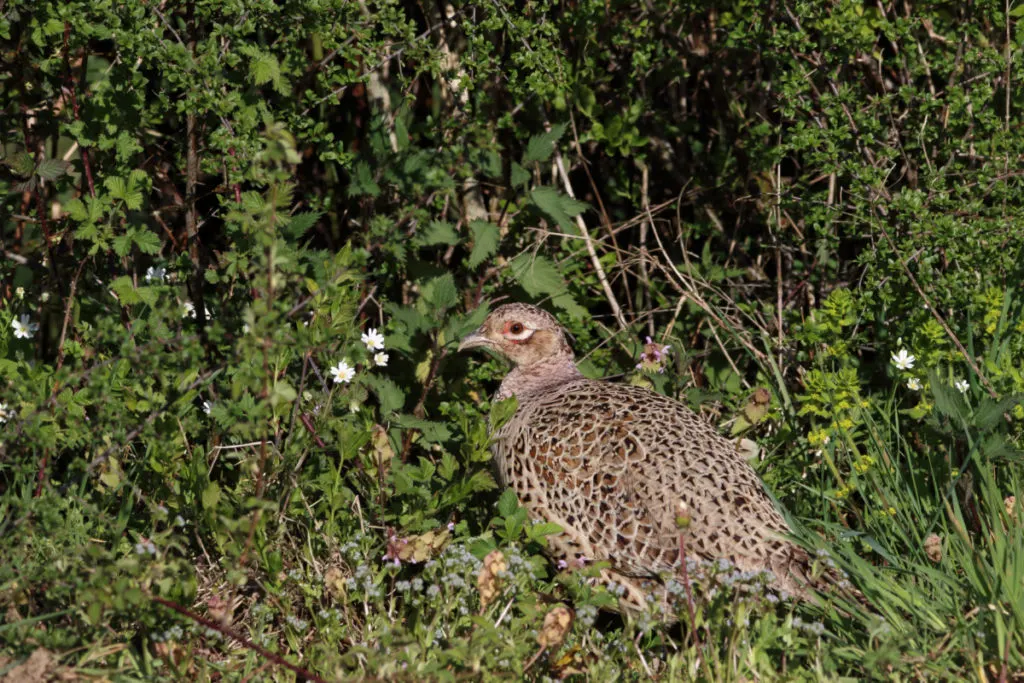
Notice the word planting, not erecting, building or constructing.
There are multiple species of trees, shrubs and perennials that can make up the bulk of your fence. Annuals will always find their way in.
Putting in a hedgerow can make a big difference in the rewilding of your garden.
Complement it with a water feature, build a bat house and let the hedgerow leaves fall and drop to the ground each autumn as you do less work and fail to clean it up. All of these activities help attract wildlife to your yard, a place of refuge.
Hedgerows as a source of food
Can you eat from your hedgerow?
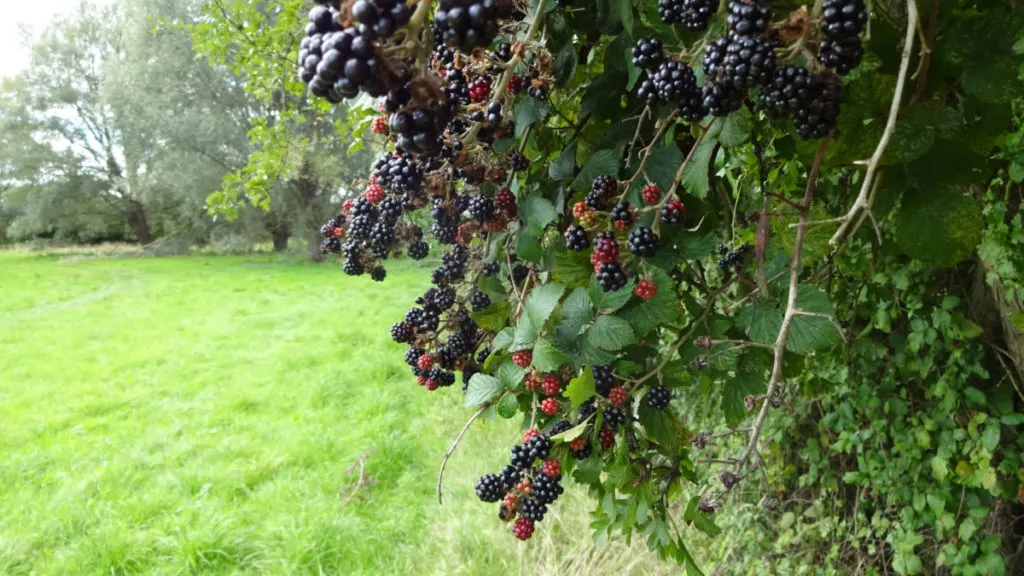
Absolutely.
We mostly think of hedgerows as sources of food for birds and animals, but we can also learn to share a harvest.
Plant these in your hedgerow for a scattered harvest throughout the growing season:
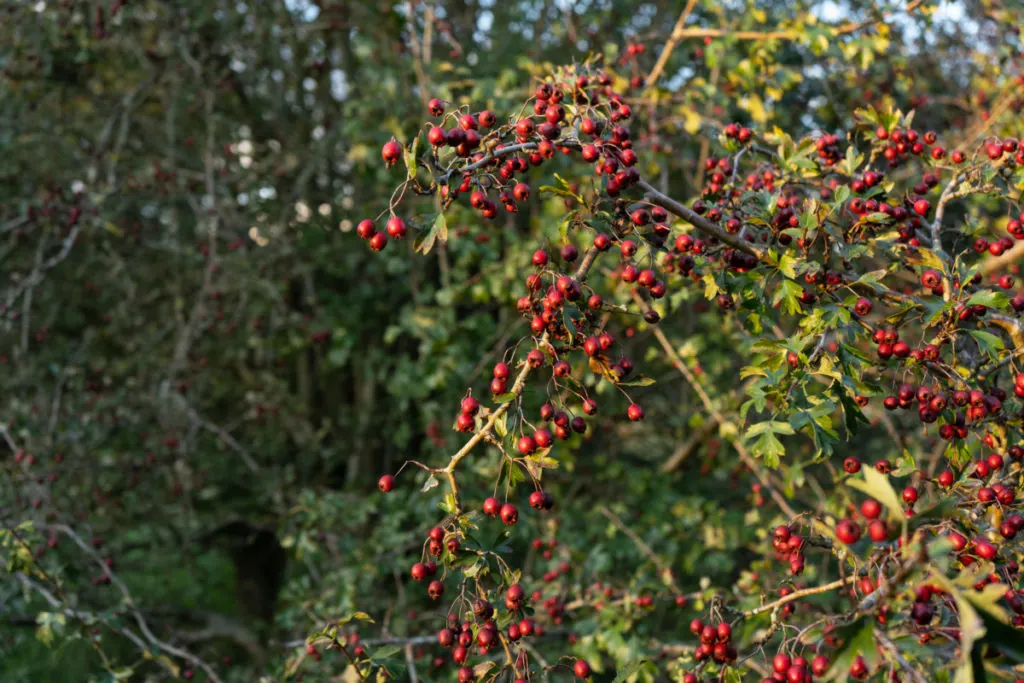
- elderberry
- hawthorn
- hazels
- blackthorn
- wild roses
- blackberries
- raspberries
- blueberries
- cherry plums
- crab apples
- dog rose
- quince
- currants
- serviceberry
- sea buckthorn
- wild cherry
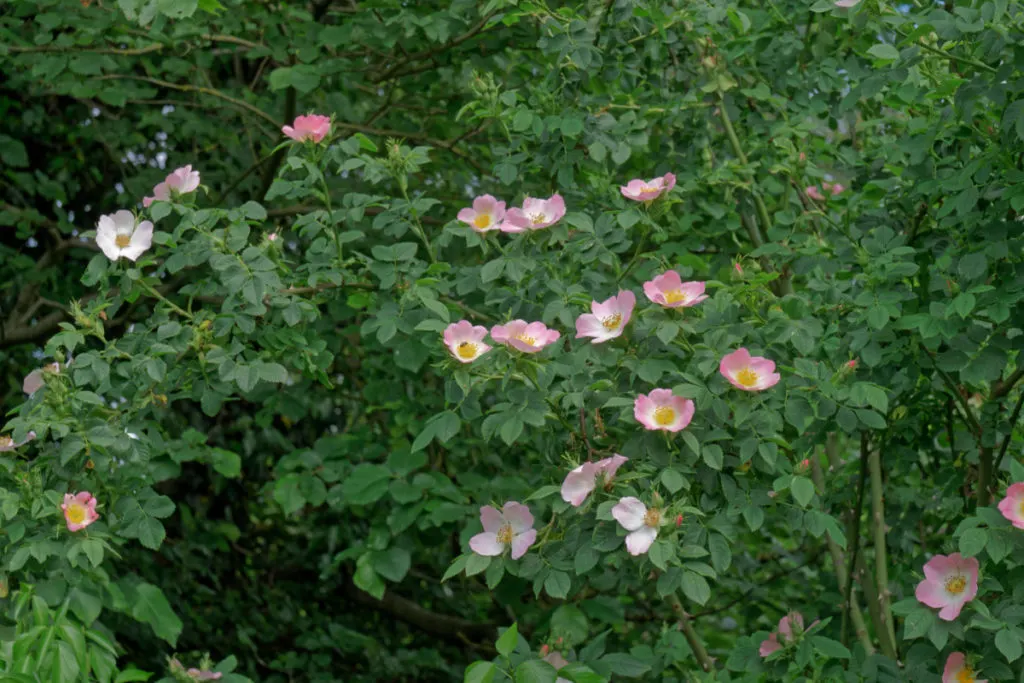
Don’t forget about all the plants that grow at the base of your hedgerow in either sun or shade. Nettles, purple dead nettle, dandelions, chickweed, goosefoot, cleavers, purslane, garlic mustard – just to name a few.
As a source of shade or support for creating a micro-climate
Don’t get me wrong, the sun is great and it’s what many plants are after. But too much sun? The plants wilt, we wilt. And it’s usually indoors that we go in search of shade and a cooler climate. Or to sip a refreshing lemonade under a grand tree…
Not all of us have time to wait for grand trees to grow to their fullest.
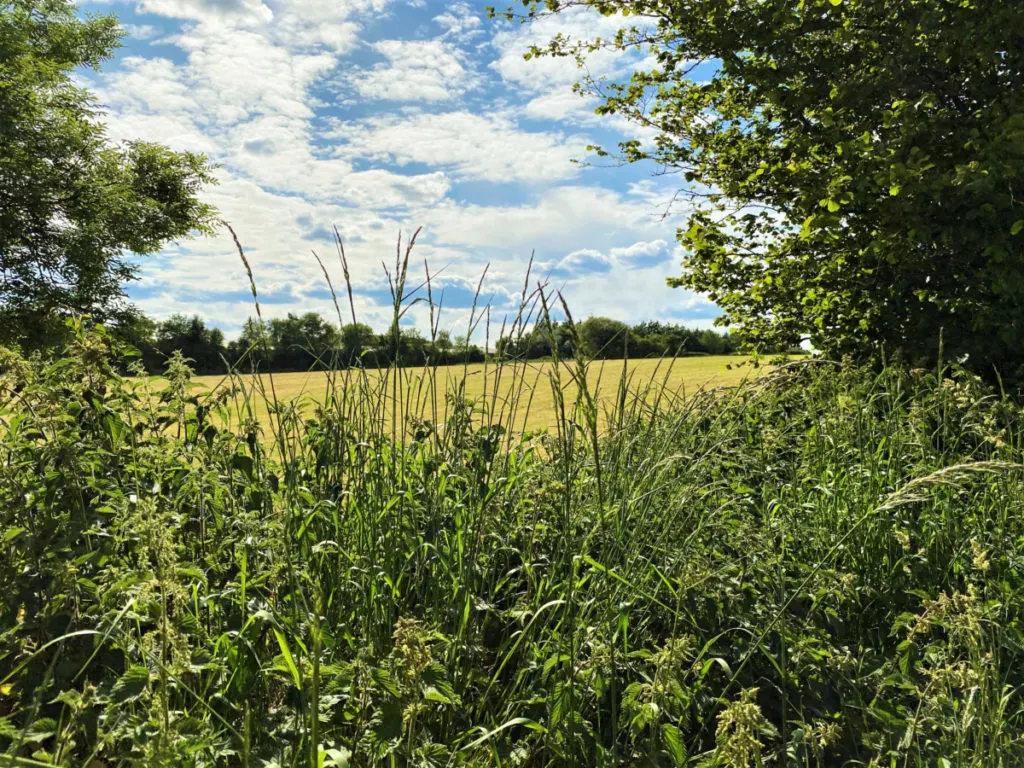
What we can do in the meantime is to plant and tend to a hedgerow to fulfill some of our need for summertime shade.
Anything we can do to cool down our backyards, the more inviting they will be. Don’t forget to put out some water for wildlife too.
Hedgerows add beauty to the landscape
Naturally, hedgerows are simply beautiful.
Sure, they can go through, and grow through, their ugly duckling phases. In general, however, plants are soothing to any soul.
Just take the time to sit out in nature and admire their beauty.
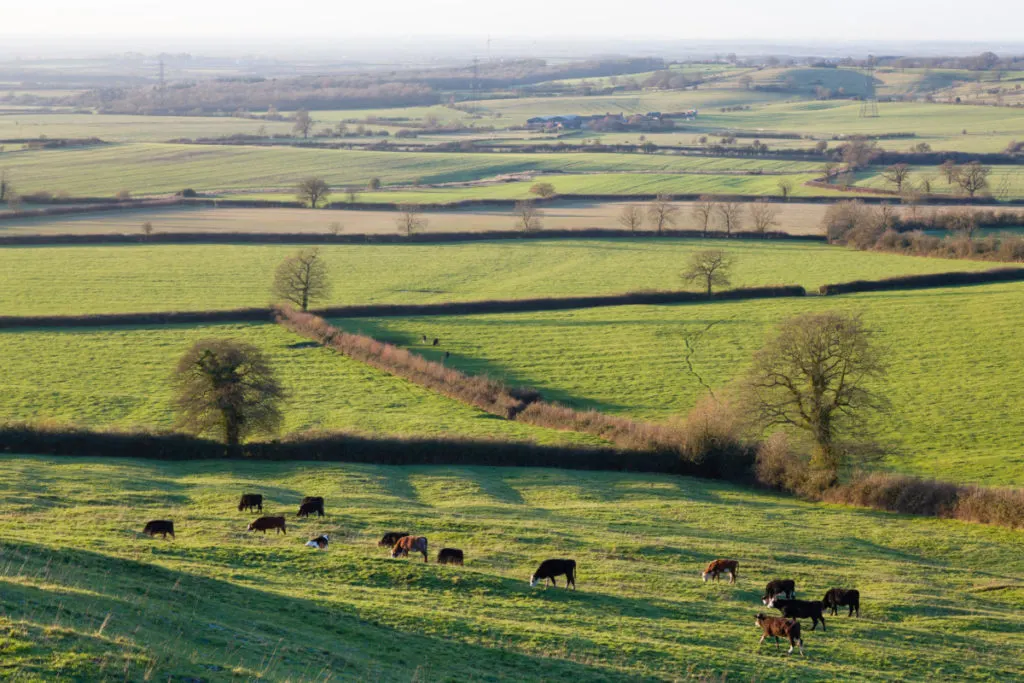
Chances are great that your hedgerow will have calming effects. Plus, it makes for a great way to spend more time outside.
Choosing a location for your hedgerow
Once you have settled on a purpose for your hedgerow, the next step is to decide where to plant it.
Hedgerows are often meant to replace fences. Quite often this will be along a property line, or more simply, anywhere you want to divide this from that.
You could plant a hedgerow to block off a parking area, or you could shelter an outdoor play area. Many people choose to block off their pasture land with a hedgerow, which can easily be used in combination with electric fencing.
It doesn’t matter whether your hedgerow runs east to west or north to south. Any direction will do. Going against conventional planning, it doesn’t even have to be in a straight line.
If you have a larger property, it may be beneficial to link hedgerows together, so that they act as wildlife corridors. Providing safe spaces for many creatures to cross.
Choosing plants for your hedgerow
We’ve already gone over a short list of bushes, shrubs and trees you could potentially plant in your hedgerow. If you missed that, scroll up to “hedgerows as a source of food”.
The plants that are right for your hedgerow, are the ones that will tolerate your soil conditions and the amount of sun/shade they will receive. Of course, it never hurts if they’re native plants.
Hedgerows, as opposed to hedges, consist of mixed species, rather than a single specimen repeated several times.
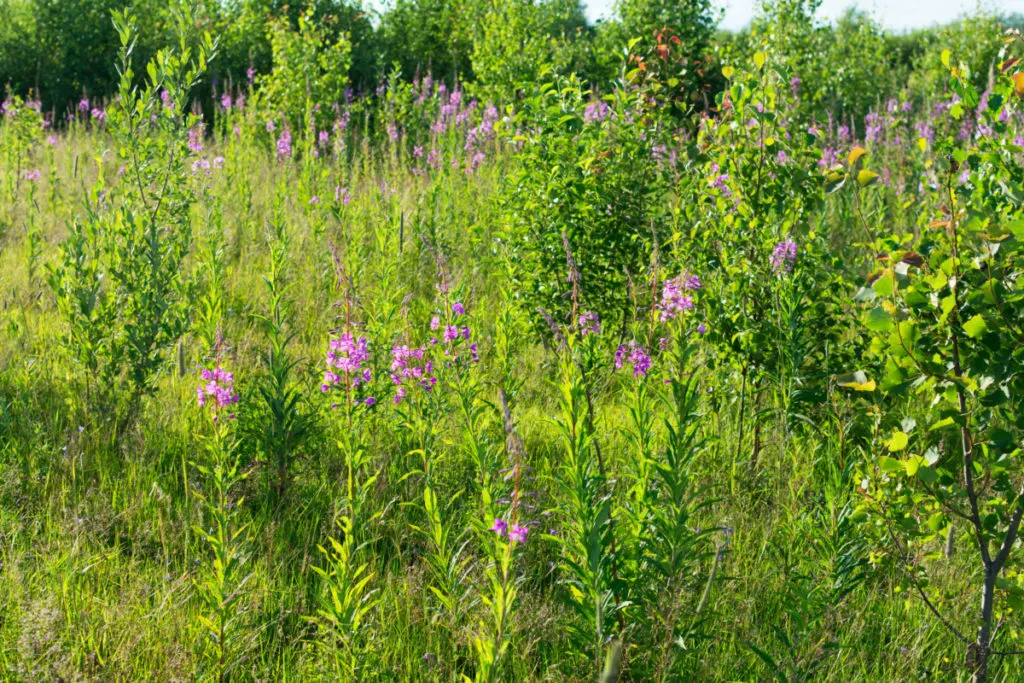
It’s never too early to start thinking about where to source the trees for your living fence. Will a local nursery have what you need? Do you know what is available?
Don’t leave this step for last, as you may have to change your plans if you can’t find the plants you wish for. It helps to find out what is available before you get in too deep.
You can then start looking at the cost of planting bareroot plants.
Pre-planning even further, you can start thinking about non-woody plants and perennials. When you consider that a hedgerow is a living ecosystem, it will only make sense that some plants thrive for a while. When time comes, they will die back, making way for another plant to take its place.
When a hedgerow is young, you’ll be able to plant more sun-loving flowers. As it matures, you can move into more shade-tolerant plants. Yes, you can even plant vegetables in your hedgerow.
In this way, your hedgerow can also act as a food forest.
For a comprehensive list of shrubs, tall trees and nitrogen fixers to add to your hedgerow, this article has all the species info you need.
How tall? How wide?
As you dive into the process of choosing plants, keep in mind how much space you have to offer to the hedgerow; both in width and height. 10′, 20′, or just 6′?
Consider how tall each plant has the tendency to grow. Ask questions about how each plant can be pruned.
Naturally, the maintenance of your hedgerow will come with time and experience, although it’s nice to have some expectations in the back of your mind.
Most importantly, the location of the hedgerow will dictate how tall you let it grow.
If you’re using a hedgerow for a privacy fence, it will only need to be as high as the view you are trying to block.
For keeping animals in or out, it will be the density of the branches, rather than the height that matters most.
The wider the hedgerow, the more benefits it has for wildlife.
With all of these taken into consideration, let’s take a look at spacing your plants within the hedgerow.
Spacing your hedgerow plants
Putting in a hedgerow is definitely not a “one size fits all” project. For the initial space between the plants is greatly determined by the species you choose.
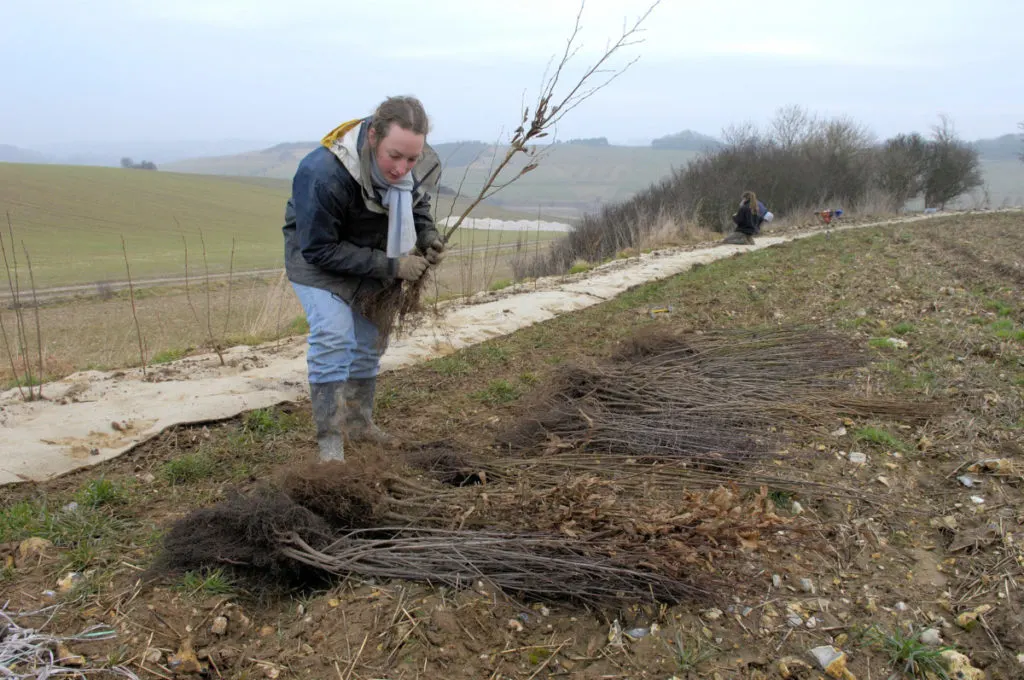
There are some guidelines, however, to make planning easier:
- 6′ in width is recommended for a hedgerow (to plant multiple rows of trees and shrubs, rather than a single row)
- determine whether your plants are slow-growing or fast-growing (it’s hard to mix planting of slow and fast at the same time, as the fast-growing plants take over)
- aim for 2 to 3 rows of plants, staggering the planting to ensure the grown hedge has no gaps
The closer you plant your trees, the sooner your hedge will fill in.
Knowing that the density will change over time, you are free to come to some conclusions of your own. It is all an estimation process, as some trees/shrubs will make it, whereas others won’t.
Don’t bite off more than you can chew
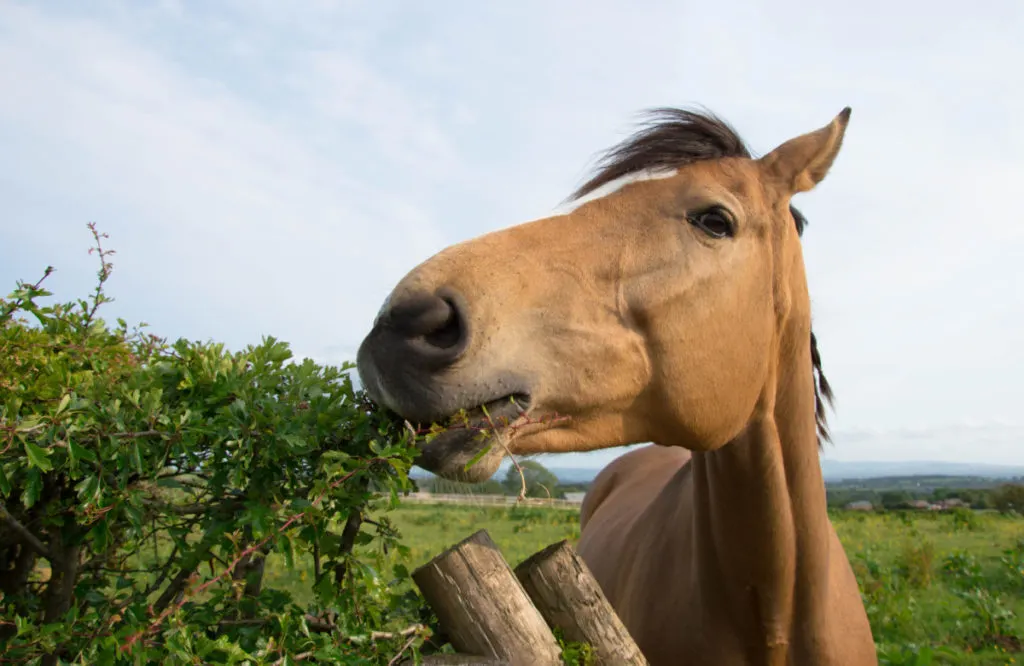
Putting in a hedgerow can be overwhelming, especially if you haven’t planted your fair share of trees, yet.
There are a couple of things you can do to simplify the process. You can take it one section of fence planting at a time. Or you can start with planting the tallest trees in spring, followed by bushes and shrubs in fall.
Spreading out the planting over time can even help to buffer the cost, especially if you’re on a budget.
Putting in a hedgerow will take more time than you can ever imagine, so go easy on yourself. Don’t expect it to be done in a weekend, perhaps not even in a month. A hedgerow is always a work in progress.
So long as you enjoy what you are doing and giving back to nature at the same time, your fence will be practical and lovely.
Planting your hedgerow
Great organizational skills will definitely help to get your hedgerow project underway.
But, when it comes down to the physicality of it all, you’ll need to grab your gardening/landscaping tools and get ready to work your muscles.
Once you’ve got your plant spacing figured out, it is time to get all those bare root trees and perennials in the ground. In most instances you’ll be dealing with 1-2 year-old seedlings/transplants. Choosing young plants over mature ones, not only saves you money, they take better to new environments too.
In the beginning, you may even need to protect the young seedlings with tubing or cloth. Be sure to take that extra-protection step into account if your garden is prone to grazing animals.
If your newly planted plants don’t require protection from gnawing teeth, they may still benefit from staking. Do this simple task at the time of planting to prevent any procrastination.
Again, a hedgerow is not a single line of trees.
So, go ahead and mix those various species up. Plant them in two or three rows to provide for that sustainable girth that protects and nurtures nature.
At first, your hedgerow will accommodate sun-loving plants. Unless, of course, it is shaded by a tall building or even larger trees.
During its metamorphosis, your hedgerow will start to invite more shade-loving plants.
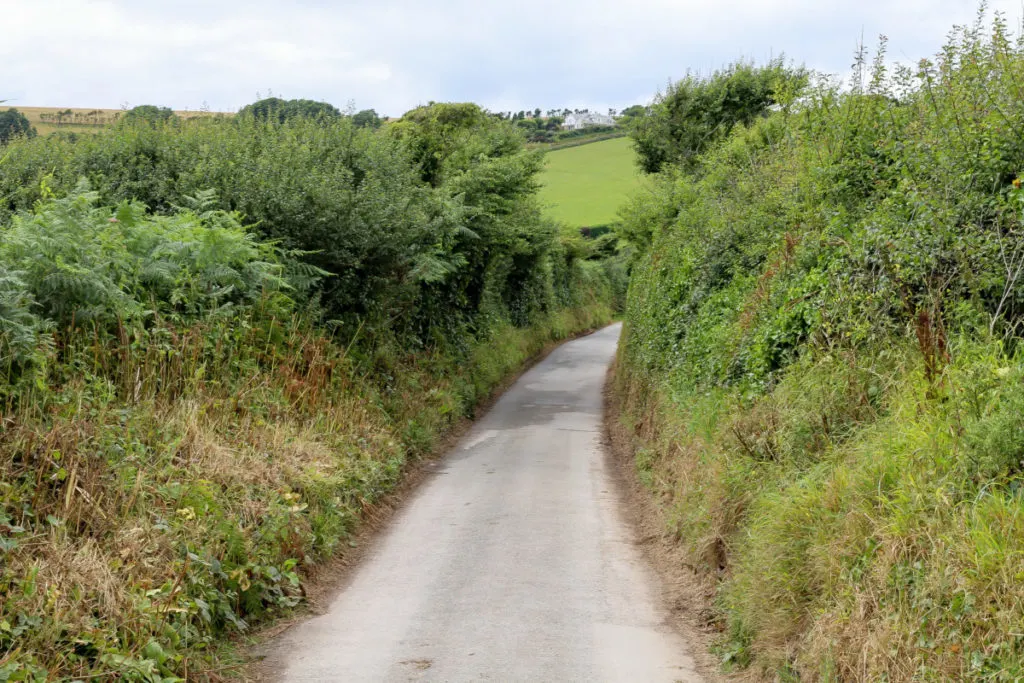
Be ready to embrace the change and follow along with it. And if at first you don’t succeed, plant and plant again. A hedgerow is always a work in progress – or have we said that already? Learn to sit back, relax and let nature take over as you enjoy the blossoms along the way.
Hedgerows and hügelkultur beds
One question that may still be lingering in the back of your mind is: how do I really get started? Do I remove the grass, or is it enough to just cut it back?
Should I put down mulch or plant my hedgerow in a hügelkultur bed?
In real life, you can do any of these things to prepare the ground for your hedgerow.
Your choice ultimately depends on the materials you have at your fingertips. If you have a lot of leftover cardboard, you could make a sheet mulch with that.
Hay, straw, wood shavings? Sprinkle that around your newly planted hedgerow trees and shrubs to keep the weeds at bay. At least until the trees get established.
If you aren’t sure what a hügelkultur bed is, Elizabeth explains in this informative article: Building A Hügelkultur Raised Bed – A Step By Step Tutorial
Hedgerow maintenance
While you can always go with the “let it grow” approach, you can only get away with that no-input work for so long.
Proper hedgerows do require at least a little bit of maintenance.
Finding the balance between neglect and over-pruning is a fine art. Some say you even need to learn to read a hedge, in order to truly know it and give it what it needs.
To maintain your hedgerow throughout the decades to come, you can do several things at the right time (but never cut your hedge during bird breeding season!):
- cut and prune the overhanging, bushy branches
- don’t overdo the amount of cutting – aim for pruning every 2-3 years
- encourage native woody plants and herbs to move in
- incorporate larger tree species into your hedgerow for even greater diversity and use
- examine your hedge from time to time, to see what visitors you have (butterflies, bees, newts, toads, frogs, lizards, hedgehogs, spiders, beetles, etc.)
If you find that your hedge is thriving, you may even be inclined to invite others, especially children, to come and see nature at work.
And by all means, link to other hedgerows and keep the green edges running smoothly for all wildlife to cross safely.
A few more thoughts before you leave in search of greener pastures
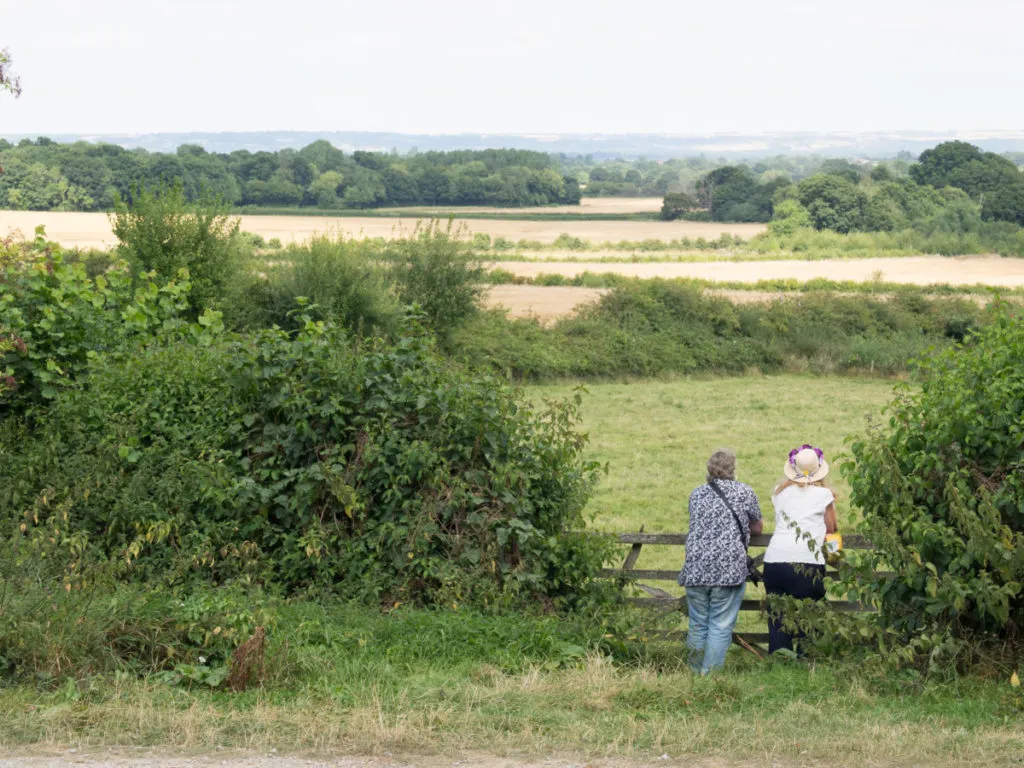
It’s also important to remember about hedgerows that they play a large part in preventing soil loss and erosion. They also have a great potential to reduce flooding.
If any of the above are of concern to you, take a moment to really consider how you could implement a hedgerow on your property.
Then dive into the following books for even more inspiration:
- Hedgerow Medicine: Harvest and Make Your Own Herbal Remedies by Julie Bruton-Seal
- A Natural History Of The Hedgerow by John Wright
- The Hedgerow Apothecary: Recipes, Remedies and Rituals by Christine Iverson

Get the famous Rural Sprout newsletter delivered to your inbox.
Including Sunday ramblings from our editor, Tracey, as well as “What’s Up Wednesday” our roundup of what’s in season and new article updates and alerts.

